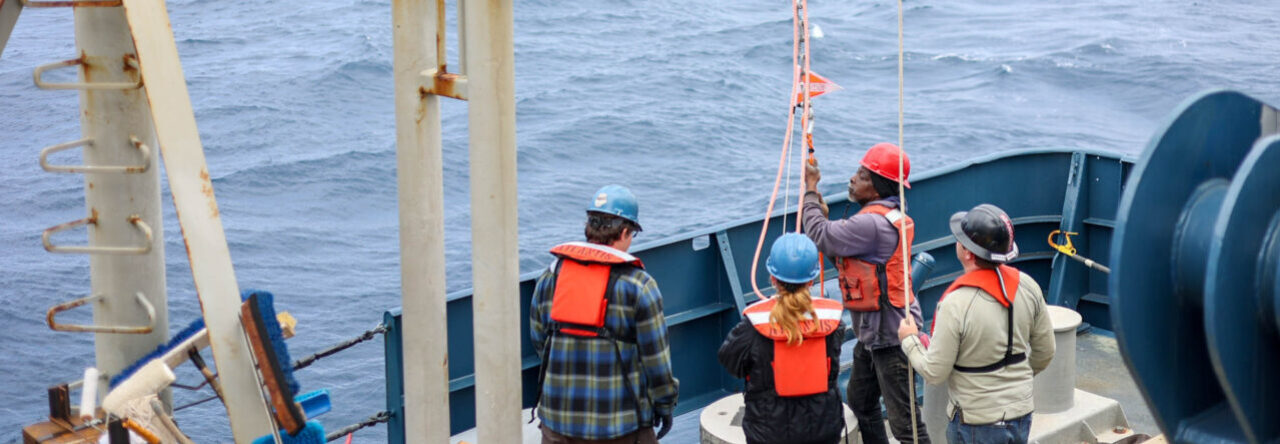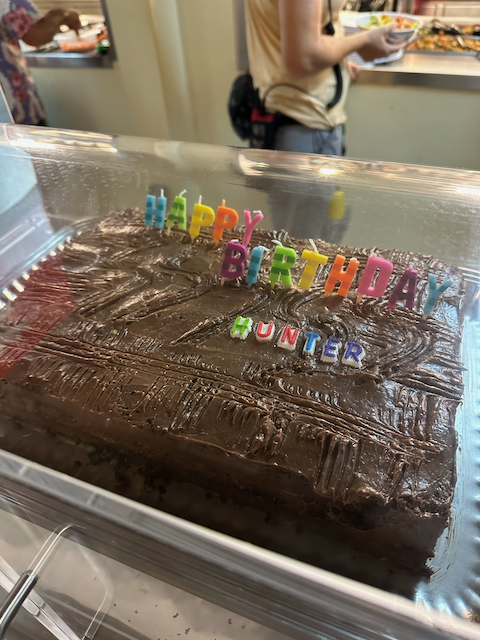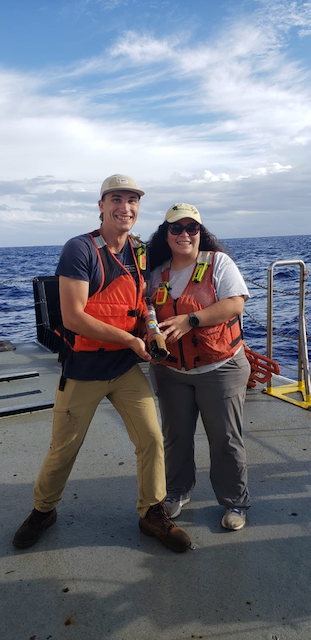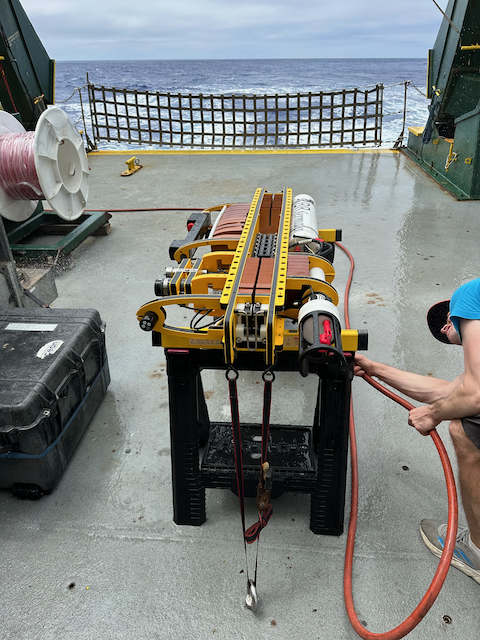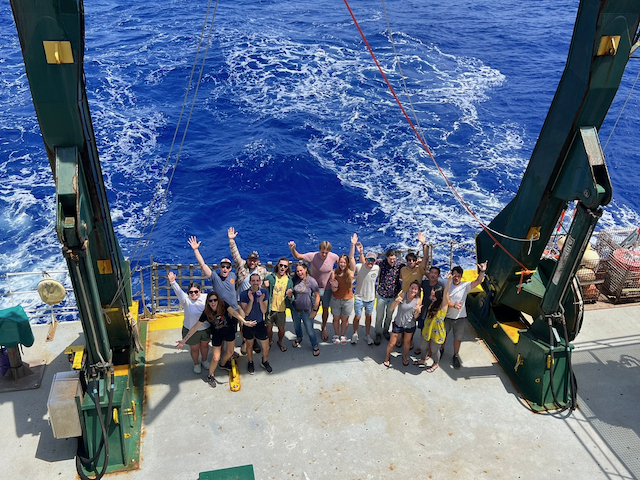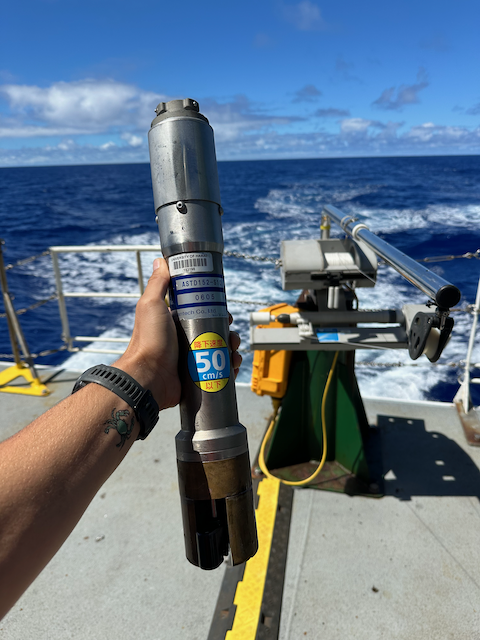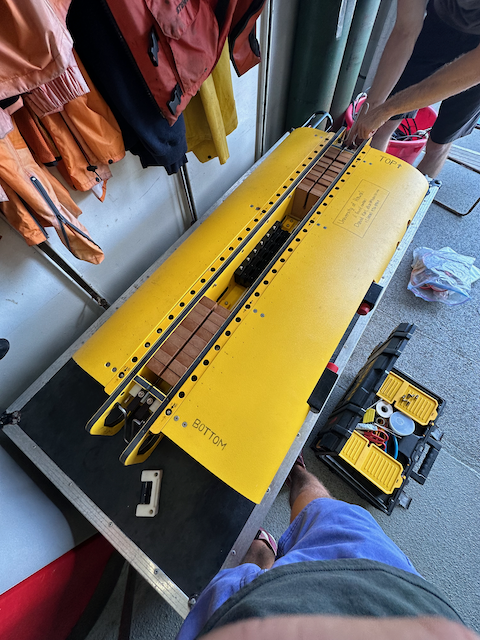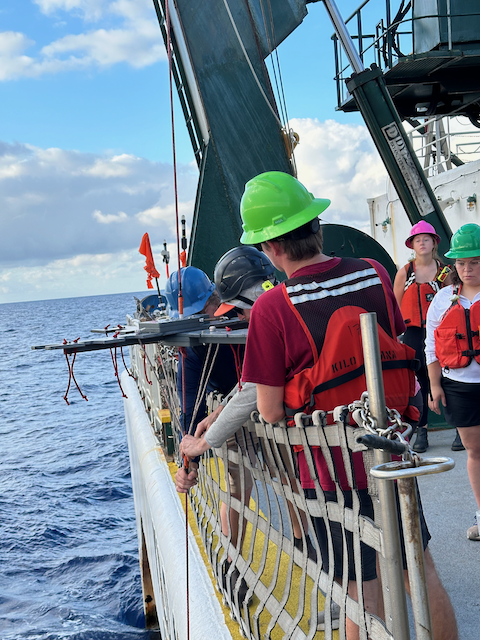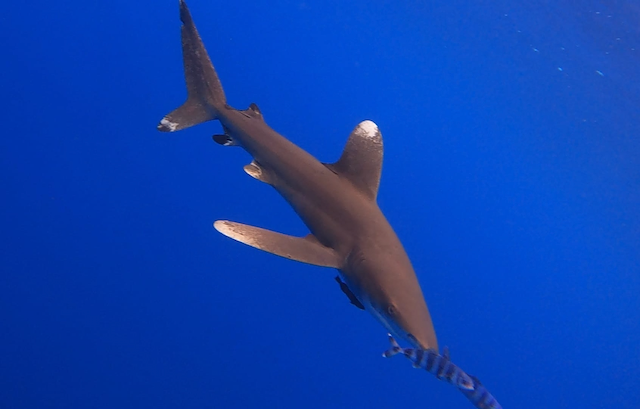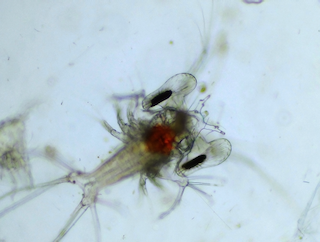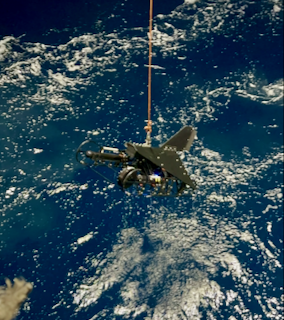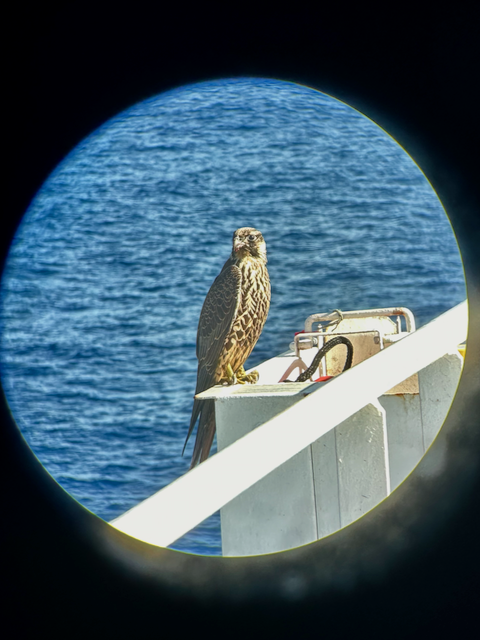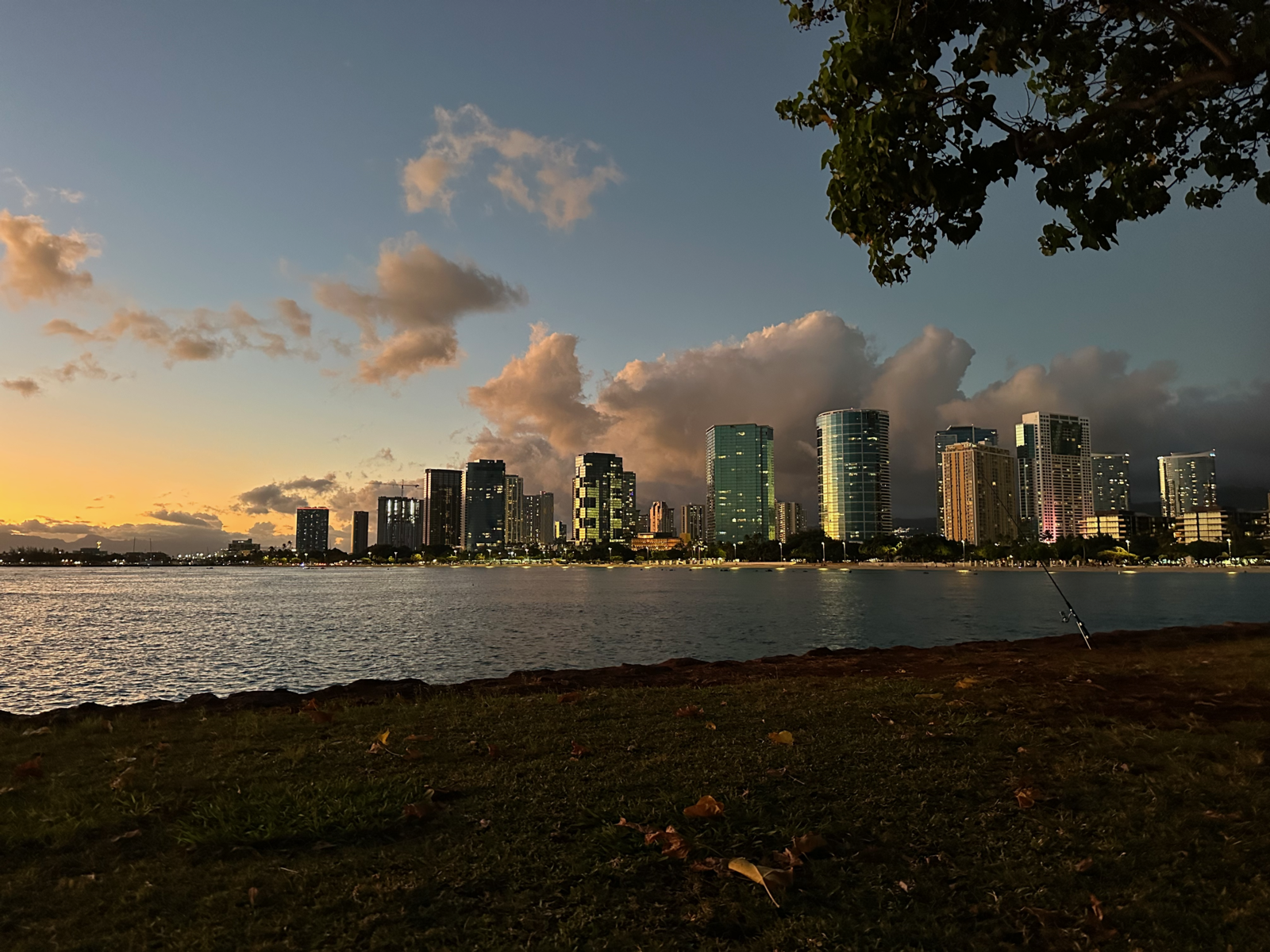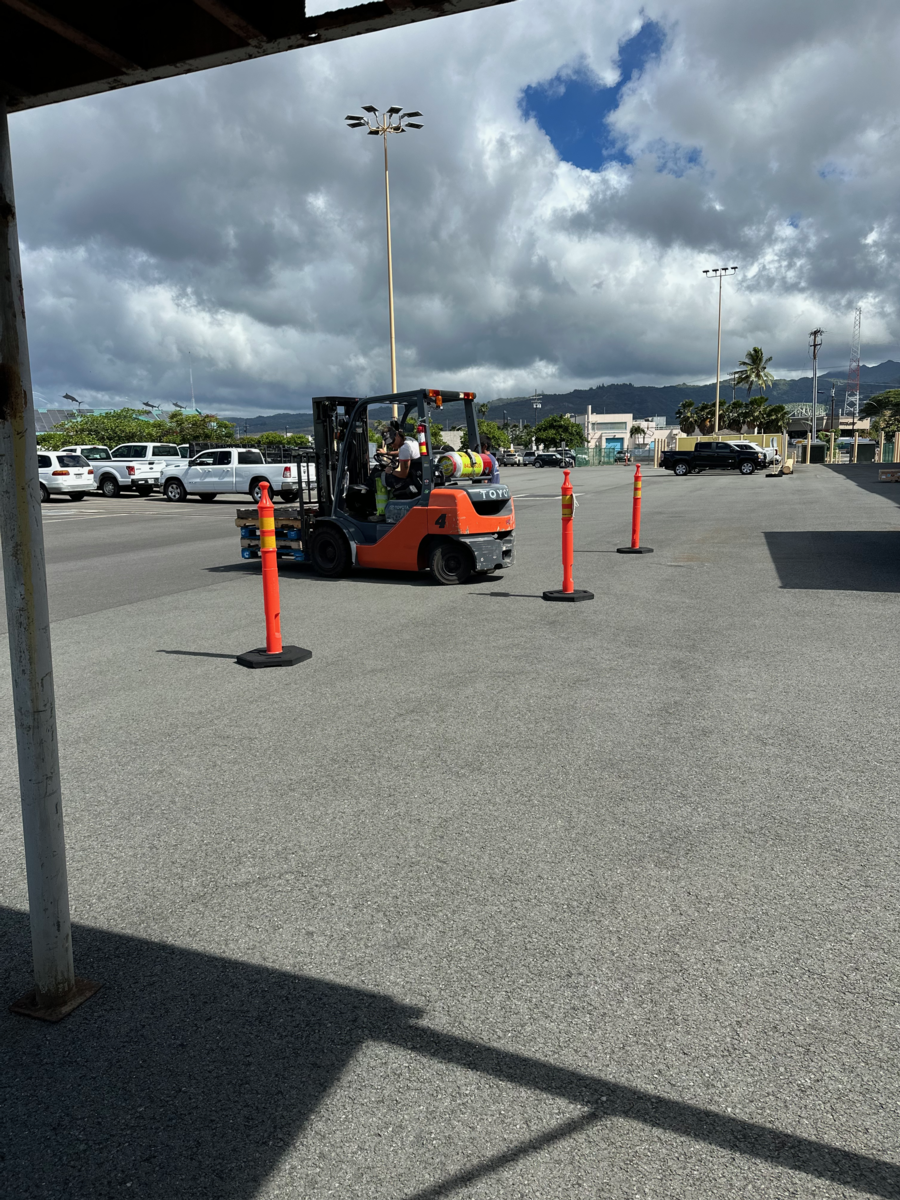Howdy all,
What a journey it’s been since my last post! We safely reached Tahiti, completed a mapping cruise while managing a suite of underway instrumentation, and concluded my long-term MATE internship. As this is my final blog post, there’s plenty to share.
Arriving in Tahiti marked the end of one of the most significant research cruises I’ve ever participated in. After so long at sea, it was a welcome change of pace. Our team of scientists and crew celebrated our successful cruise by unwinding in beautiful Papeete. I had the chance to relax with friends, go freediving in Moorea, and explore the islands. However, after just two days of recovery, it was back to work for our next cruise.
On our return journey to Honolulu, the Kilo Moana embarked on a cruise to map understudied seafloor regions. This survey utilized ship systems such as a multibeam echosounder, subbottom profiler, and magnetometer. For OTG, this suite of instruments operated fairly autonomously, requiring only light deck work for the magnetometer, consistent monitoring of mapping software, communication with the bridge about ship heading, and ensuring data upload to our remote researchers. In addition to mapping, this was also a cruise of opportunity for optical seawater measurements. Working alongside Dr. Ali Chase, Briana and I helped maintain and troubleshoot unique instrumentation measuring different spectral properties of surface seawater and the atmosphere. The primary goal of this data was to validate satellite-derived data. By the end of the cruise, Dr. Chase had collected valuable data, while Briana and I gained more troubleshooting and hands-on experience with high-sensitivity optical instrumentation.
The beauty of this cruise’s operational schedule was that it didn’t require 12-hour shifts. This allowed me time to work with Ben and James, learning about the ship’s network architecture and how OTG members leverage VOID Linux and the MQTT publish-subscribe communication protocol to manage the ship’s network and connected instruments. Over a few sessions, they taught me to operate a Void Linux machine, configure a network switch, interact with the ship’s network, and connect a sound velocity probe for data acquisition and storage. As IT and networking skills become increasingly important for marine technicians, this was an invaluable learning opportunity for me.
The remainder of our transit back to Honolulu was relatively uneventful, save for a rogue glider recovery. This successful multi-hour operation involved locating, backing down on, and tagging a glider with a dog catcher wire loop – a great way to conclude our cruise. Soon after, we returned to Honolulu and demobilized, marking the end of my long-term MATE internship.
So what can I say other than that the past several months have been nothing short of an amazing adventure. Across two MATE internships sailing aboard the R/V Hugh R. Sharp, R/V Atlantic Explorer, and R/V Kilo Moana, I’ve had the incredible opportunity to grow as a technician and interact with a community of hardworking, passionate, and like-minded people. These internships provided more than just technical training; they offered lessons in adaptability, teamwork, and problem-solving. Working with exceptional technicians who encouraged initiative and provided constructive feedback, I learned to safely tackle challenges with attention to detail. Each leg of this journey was a unique learning experience that not only grew my technical skills but also developed and affirmed my passion for this field and the opportunities it holds. From performing deck operations to troubleshooting instrumentation, I gained hands-on experience that transformed me from a lime green novice to a more confident and capable technician.
As I transition into my current role as a SUBSEA project Ocean Technician at the University of Hawaii at Manoa, I carry with me the invaluable lessons and memories from this transformative experience. Over the last few months, I’ve traveled around the world, made new friends, gained a multitude of experiences, all while investing in my future.
I want to express my heartfelt gratitude to the amazing team who made this impactful opportunity possible. A special thank you to Maria Osciadacz for her constant hard work and dedication to the program’s success. Thank you to Dan Fitzgerald, Carolina Funkey, Tully Rohrer, Trevor Young, Ben Duncan, James Harris, Lance Frymire, Tim Deering, Christian Kernisan, Alex Dominguez, Rory O’Connell, Lydia Sgouros, Emily Tate, Jace Innnis, the crews of the R/V Kilo Moana, R/V Hugh R. Sharp, and R/V Atlantic Explorer, and all the scientists I’ve had the privilege of working with over the last year. My internship experience wouldn’t have been the same without any of you, and I am forever grateful for your mentorship and support.
Now, I look forward to contributing to this field as I work with the University of Hawaii at Manoa and Schmidt Sciences OBVI project to help research the unique biogeochemistry of the North Pacific and South Atlantic Subtropical Gyres. For those interested, you can follow this link to learn more about the OBVI and SUBSEA projects: Schmidt Sciences OBVI
Thanks for tuning in, and to any future MATE interns reading this – I hope to see you out there soon!
All the best,
Hunter
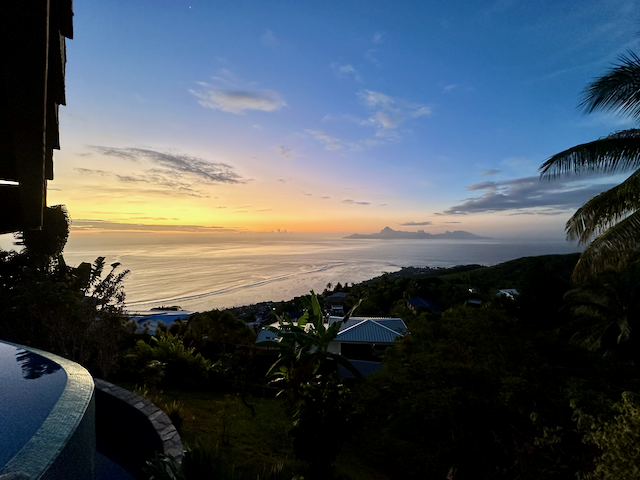
– View of Moorea at sunset

– The KM at dock in Papeete
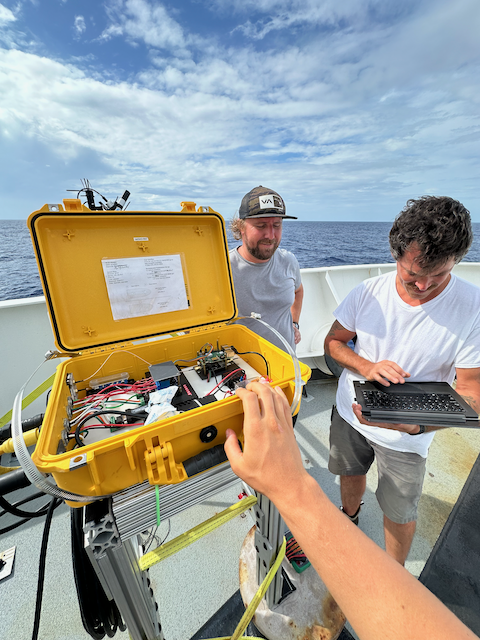
– Day 1 of the mapping cruise. Troubleshooting the pySAS autonomous solar tracker and surface ocean radiometer system (ended up being a grounding issue for one of the relay boards).

– The KM’s magnetometer. Ben for scale.
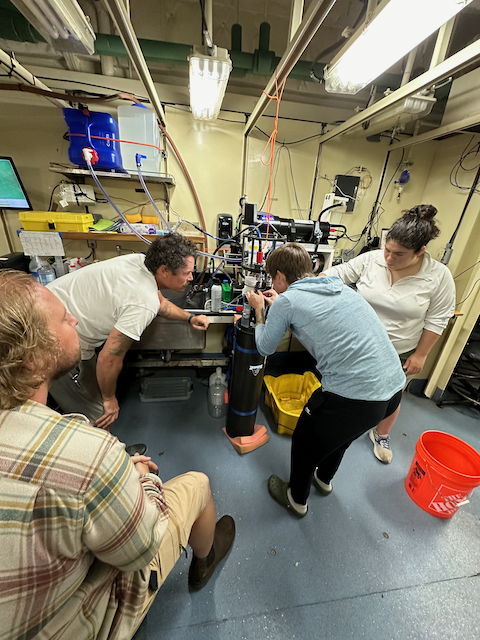
– Troubleshooting the IFCB (an automated image capture microscope) for humiditiy warning

– Briana exploring the engineering spaces of the KM
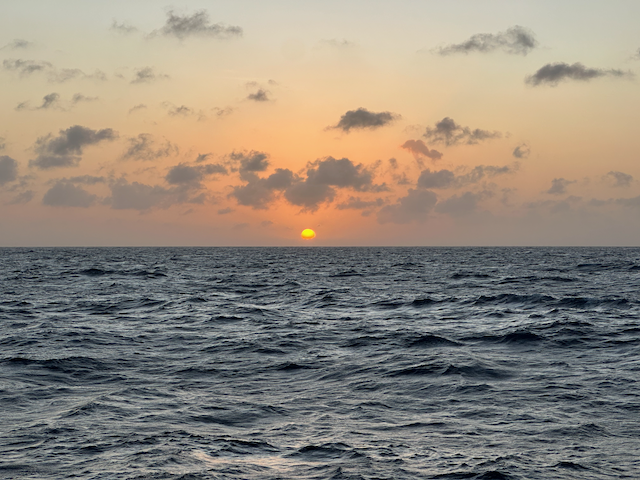
– The last sunset of my MATE internship

